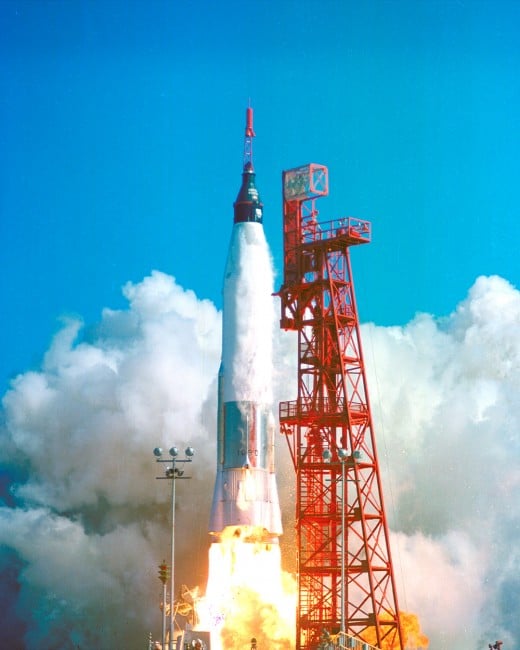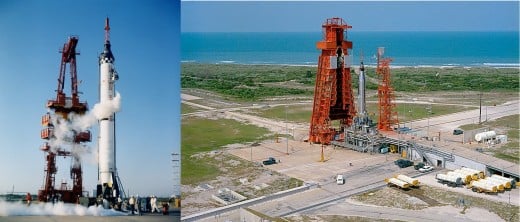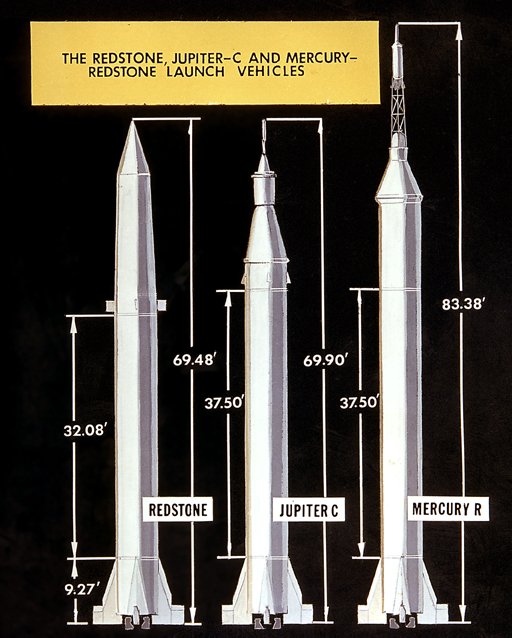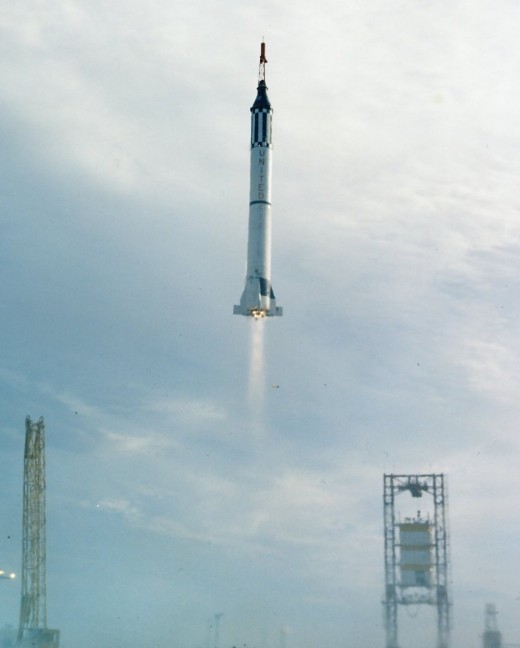NASA Project Mercury - Launch Vehicles/Rockets

This page is part of a series on America's first manned space program, Project Mercury. Links to all the hubs in this series can be found at the NASA Project Mercury Overview.

Three different launch vehicles were used with NASA's Mercury spacecraft. Early testing of the Mercury capsule and its emergency escape system used the Little Joe rocket. The Redstone rocket was used for suborbital flights into space, and the Atlas rocket carried men into orbit. Little Joe was designed and built specifically for project Mercury, while Redstone and Atlas were military ballistic missiles that were modified for use as launch vehicles.



Little Joe
NASA needed a way to test the Mercury spacecraft before using it for manned spaceflight. The capsule needed to withstand the rigors of launch and reentry. In addition, a system was needed to quickly and safely pull the spacecraft away from the rocket in the event of catastrophic failure of the rocket during launch. An escape tower was designed for such a situation, and needed to be tested.
Several test flights would be needed. Using actual Redstone or Atlas boosters would be prohibitively expensive. A rocket was needed that could launch a Mercury spacecraft to sufficient heights and at sufficient speeds for adequate testing, but at a lower cost. A booster named Little Joe was designed, which could be built at one-fifth the cost of a Redstone rocket, and in much less time.
Little Joe missions were launched from NASA's Wallops Flight Facility in Virginia. There were eight Little Joe missions, two of which carried monkeys to help determine the effects of such flights on primates. Not all of the Little Joe missions succeeded in meeting all objectives, but in the end it was determined that both the Mercury spacecraft and the emergency escape tower could perform as required in future manned missions.




Mercury-Redstone
The Redstone rocket was designed for the US Army by Werhner von Braun and his team. Werhner von Braun, a German rocket scientist who helped develop Germany's V2 rocket in WWII, came to work for the United States following the war. The Redstone rocket builds upon the V2 design, and was intended for use as a medium range ballistic missile, carrying conventional or nuclear warheads.
The Explorer 1 satellite, America's first successful response to the Soviet Union's Sputnik, was launched atop a modified Redstone rocket, the Jupiter-C. The Mercury-Redstone was based on this enhanced Redstone design, with further modifications that improved safety, and which enabled the Mercury spacecraft to be used as a payload.
Mercury-Redstone launches took place at Cape Canaveral's Launch Complex 5. Four test missions were flown, including one in which a chimpanzee named Ham became the first chimp in space. Two manned suborbital flights followed. On May 5, 1961, Alan B. Shepard, Jr. rode atop a Mercury-Redstone rocket to become the first American in space. A second suborbital flight, manned by Gus Grissom, took place on July 21, 1961.
Future Mercury missions were intended to put a man into orbit. For that, a more powerful rocket would be needed.



To read more about orbital and suborbital spaceflight, see: Concepts of Orbital Spaceflight

Atlas D
Atlas was an Intercontinental Ballistic Missile (ICBM) developed by the US Air Force in the 1950s. Designed for long-range delivery of warheads, the Atlas rocket proved to be very useful to NASA. In addition to putting Mercury astronauts into orbit, it launched target vehicles for Project Gemini's rendezvous and docking maneuvers, and Mariner probes to Venus, Mars, and Mercury.
The first operational version of the Atlas rocket, Atlas D, was modified for use in Project Mercury. Missions using the Atlas booster were launched from Cape Canaveral's Launch Complex 14. Several test flights were launched, the final one of which put a chimpanzee into orbit and successfully returned him to earth. On February 20, 1962, a modified Atlas D thrust John Glenn into orbit, making him the first American to orbit the earth.



Remaining Mercury Missions
The Atlas-D booster was used for three more manned orbital missions during Project Mercury. Astronauts on those flights were Scott M. Carpenter, Walter M. Schirra, and L. Gordon Cooper, Jr., who brought Project Mercury to a successful conclusion by spending more than a day in space, orbiting the earth 22 times.
VIDEO: First Successful Mercury Redstone Test
Video: Mercury-Atlas Launch (John Glenn, Feb. 1962)

References
In addition to the sources listed on the Project Mercury - Overview page, information for this hub came from the following original source document:
- Hohmann, B. A., Pilot safety program for mercury-atlas launch vehicle, NASA, 1961

















